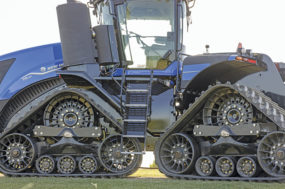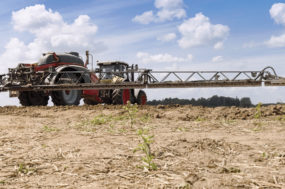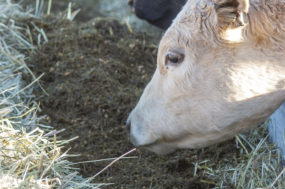It is rooted in possibly the most famous barn fire of all time – the Great Chicago Fire of 1871. Whether legend or fact, the story goes that a cow kicked over a lamp – leading to hundreds dead, thousands homeless and the destruction of approximately 17,000 structures.
A barn fire today is not likely to lead to such massive destruction, but it can still be devastating to a farm enterprise and family.
Oil lamps for light might have long since been replaced but the potential for fires are increased when appropriate precautions are not taken.
Heat (source of ignition), air (oxygen), and fuel; these are the requirements for a fire to ignite and burn. You can’t do much about the air but you can control for the fuel and heat elements of fire.
Potential fuels for fire include flammable farm materials such as bedding materials like straw and saw dust, hay, grain dust, fertilizer, pesticides and herbicides along with cobwebs, dust and paint.
Accelerants can both be the source of a fire as well as a means for increasing the speed at which the fire spreads.
Common accelerants include gasoline, fuel oils such as kerosene, diesel fuel and heating oil, engine oil, ethyl alcohol, turpentine, naptha, methanol and aerosol cans.
Ignition sources, or the heat element, include such diverse items as cigarettes and matches, naked flames, electrical appliances, fence chargers, electrical fixtures and wires (especially if faulty or misused), batteries, static electricity or chemicals that react with each other or with water or dampness.
To prevent fire is to take steps to avoid the above three elements from coming together. Below are some basic steps to reduce fire hazards.
- Inspect the farm, including all outbuildings and any place where flammable and combustible materials, accelerants or ignition sources might be used or stored.
- Good maintenance includes good housekeeping. Daily chores should include appropriate disposal or storage of hazardous materials such as trash and oily rags. Keep dust, debris and cobwebs under control in buildings, ducts and engines.
- Regular inspections of electrical systems should include checking for intact and grounded wiring and broken insulation. Gas and fuel leaks should be routinely checked for as well.
- Store flammable materials away from potential ignition sources. Any one who lives or works on the farm should be well trained on the safe storage, handling, and transportation of flammable materials.
- If smoking is allowed, keep it in designated hazard-free areas with fire-safe containers for cigarette butts and matches.
- Be prepared for a potential fire by keeping regularly inspected and charged ABC fire extinguishers in strategic locations on the farm. Anyone who lives or works on the farm should be trained in the effective use of extinguishers.
- Have functioning lightning rods on major buildings.
- If burning is allowed, do so only with all permits, precautions, water or extinguishers necessary to reduce risk, and do not burn on windy days. FG
References omitted but are available upon request at editor@progressivedairy.com
—Excerpts from Penn State Agricultural Safety and Health News, September/October 2007
Sally Maud Robertson
Agricultural Engineering
Penn State University










